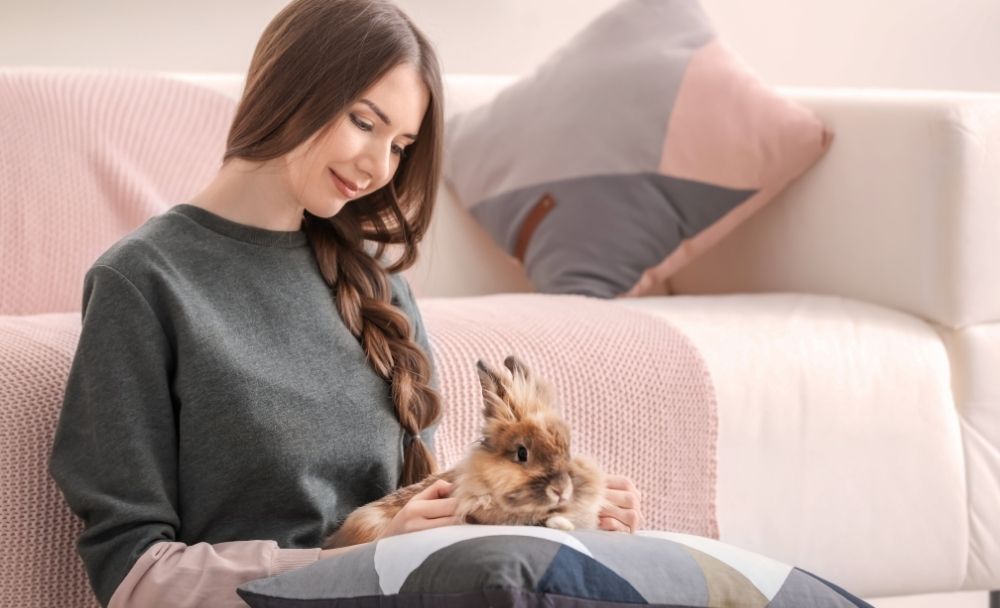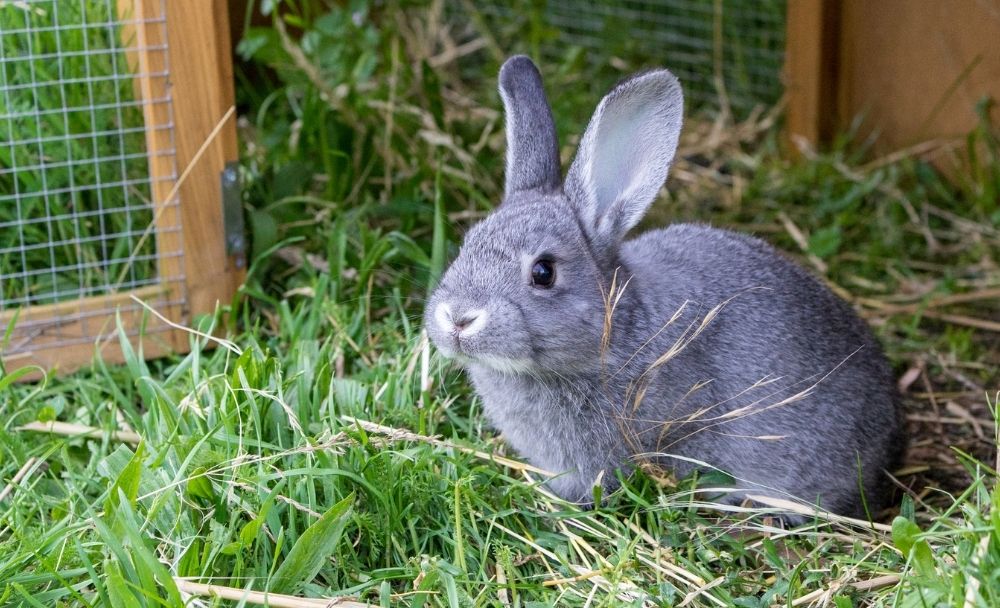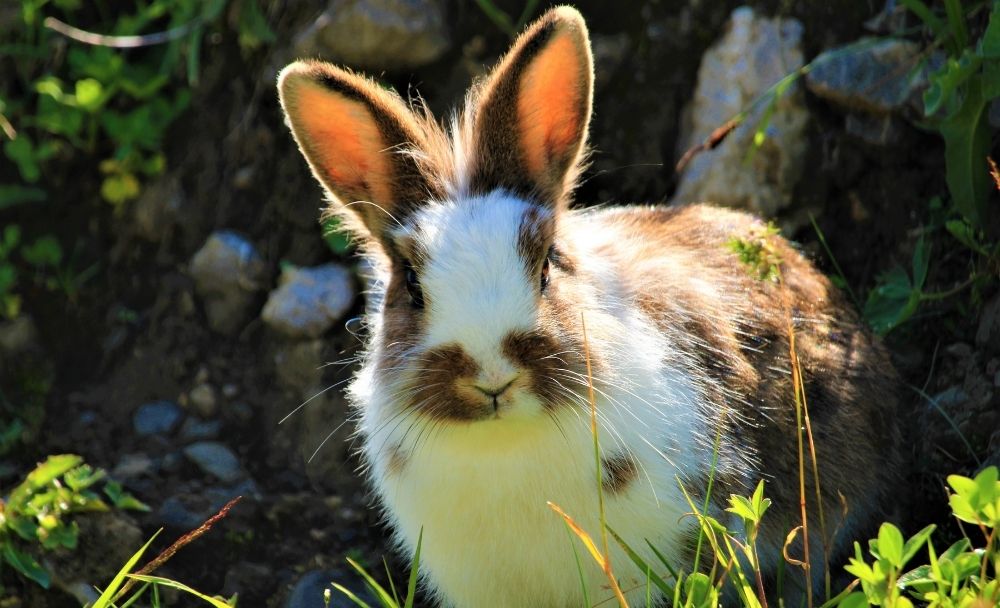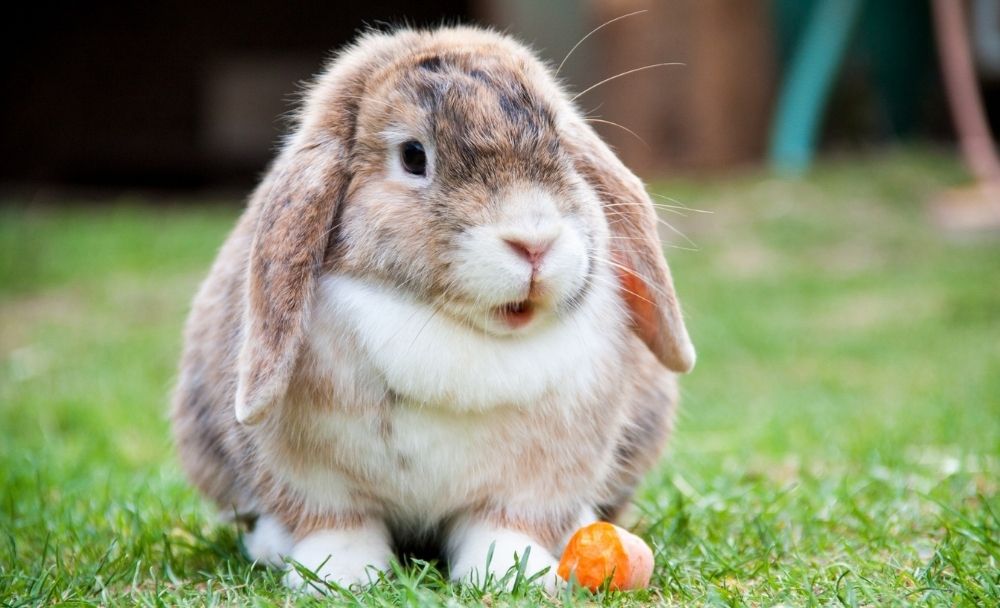Many rabbit owners have argued, and many potential owners have struggled to find the best preferences for their bunnies when deciding on keeping rabbits as an indoor pet vs. outside. Is it better to let your rabbit indoors, or can pet rabbits live outside? Let’s figure out what works best for you and your bunny.
Indoor Rabbits

Domestic rabbits who live indoors often live in two different ways. They either live very freely with access to the whole house or live in a rabbit hutch with closed-off and large enough areas for them to live comfortably.
Bunny owners could argue that it is easier for them to monitor their indoor-living bunny and be more readily alerted if anything is amiss. It is also more likely that there are more opportunities to engage and play with an indoor bunny, especially if they are a close companion.
Both ways are acceptable as long as the bunny is safe and not exposed or within reach of any potential household hazards. There are pros and cons to your bunny living inside, which I’ve listed below. These can help you to determine whether you want them to live indoors or not.
Pros of Indoor Rabbits
Indoor bunnies are safer from outside predators, such as birds, snakes, foxes, roaming dogs and cats, and other opportunistic animals. They are also safer from potential diseases found in an outdoor setting, such as myxomatosis or calicivirus.
The environmental conditions can also be better regulated indoors, hence more stability and protection from adverse weather events that they may experience outside.
Cons of Indoor Rabbits
Essentially, rabbits confined to indoor spaces do not have many occasions to play freely outside and breathe in the fresh air. They are also disconnected from their natural habitat and cannot dig and create tunnels inside a house.
If the house is not safe for a pet rabbit, it can have serious consequences. Bunnies tend to dig, claw, and chew things so they can do a lot of damage to furnishings, for instance, when kept indoors and allowed to roam freely. They could also nibble on something they shouldn’t, which can be detrimental. For example, electrical wirings and electronic cables could be chewed through too, which, as you can imagine, means your domestic rabbit is at high risk of electrocution (keep a lookout for our future article about how to rabbit-proof cabling with cord covers).
The Solution for Indoor Rabbits
You can solve the cons of rabbits living indoors by looking at the following tips.
- Make sure everything in your indoor space is safe for your rabbit. Take away or safeguard wires, cables, or anything harmful to them.
- Have an Outdoor Rabbit Run that you can intermittently let your house rabbit wander safely outside. Just make sure that the rabbit can adapt to the weather and that the conditions are not too harsh, given they are used to acclimatized indoor living.
Outdoor Rabbits

Outdoor rabbits have different lives from indoor ones. When they stay outside, they can grow thicker fur to help them survive in cooler weather conditions.
Outdoor rabbits need lots of space to run in and a safe, comfortable, and well-equipped rabbit hutch for them to rest, and a place to hide. Take a look at the pros and cons to help you make the best choice.
Pros of Outdoor Rabbits
Outdoor rabbits can thrive in their natural habitat. They can breathe in the fresh air and do activities that wild rabbits do, such as digging holes, running on the grass, tunneling.
A bunny that lives an alfresco life has lots of space to run about if residing in a large Outdoor Rabbit Run and Hutch, and they can live a happy, more natural life, like their wild rabbit counterparts.
Another consideration is that generally, it is easy to take care of the rabbit in one area instead of multiple areas like an indoor bunny would have.
Cons of Outdoor Rabbits
One tremendously important factor is that an outdoor rabbit can quickly get lonely if they don’t have the company of other rabbits or people.
Exposure to adverse weather conditions is another disadvantage to outdoor living. If you want to keep your rabbit outside in winter and live in an area with cold weather and freezing temperatures, you will need to purchase a rabbit hutch with suitable insulation.
Rabbits are a prey animal. They will need adequate overhead protection as well as a cage around them. Consider swooping birds, other pets you have, even the neighbor’s cat. Rabbits are sensitive and can die of fright if scared.
The Solution for Outdoor Rabbits
Nevertheless, by eliminating the following cons, your bunny could stay happily outside:
● Care for two or more rabbits, so they always have the company of their kind, check on them regularly and give them attention.
● Please make sure you have ways to protect them from any harsh weather. Use waterproof covers or have a space where you can move them (such as a hutch in the shed or garage) where they can stay while any adverse weather events occur.
● Be aware of the predators in your area and make sure you have the proper protection in place (wired roof and wired floors for your bunny and a sturdy metal enclosure)
● Moving about will help your rabbit keep warm in the winter months. Try to set up a rabbit hutch, run, and tunnel system where your domesticated rabbit can move between different areas. Different hideouts, toys, and tunnels will keep them mentally stimulated and help them stay warm.
Don’t let your rabbits have free reign over your garden. They will nibble on just about everything, and many poisonous plants can be harmful to your rabbits, such as daffodils, tulips, lilies, potatoes, sweet peas, and broad beans. This list is not exhaustive, so it is best to keep your rabbit in a cage or hutch and control what food they have access to.
If you decide to move your rabbit indoors for colder weather, they will need to acclimatize. Try moving your pet rabbit from outdoors to a garden shed or undercover area first, then inside your home.
Keep an eye on your rabbit’s ears and how your pet rabbit is positioned. If your rabbit has very cold ears and is sitting on its legs instead of stretching out, it might be too cold. You may also find its fur is fluffed up. This is also a sign that your rabbit is too cold.
Can Pet Rabbits Live in the Heat Outside?

Rabbits are much more comfortable in cooler temperatures than in extreme heat. If it is scorching in Summer, ensure you have their hutch positioned in a shady area. Check they have adequate fresh water and a shaded run.
A too warm rabbit is likely to have redness on the inner side of its ears and may appear to be panting. They might also be sluggish and slow-moving.
If you think your pet rabbit is too hot, try rubbing a cool, damp towel around their ears. Pop some ice cubes in their water bottle to cool down their water. However, don’t wet your rabbit, and never give your pet rabbit a cool bath.
Indoors or Outdoors?
The answer to this question relies on many factors. Every rabbit owner will have particular reasons for choosing one living condition over another for their rabbit. However, fundamentally, you need to decide whether keeping rabbits indoors or living outside is best for you. Research the breed you have or are interested in owning, and then follow the recommendations to take care of that bunny.
Another way to find out this information is by talking to your veterinarian in the area you live. By gaining this knowledge, you will learn much about the different rabbit breeds and what living environment is best for their welfare.
Essentially, doing your research is one of the most important things when choosing what is good for your bunny.
Look at your environment and the space you have for your rabbit. See whether your home will suit them or an outdoor hutch will be better.
Ultimately, we want your outdoor bunny to live a happy, healthy, and safe life. It’s up to you to make sure they do live that way.

